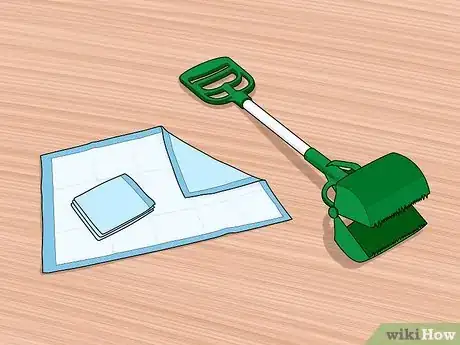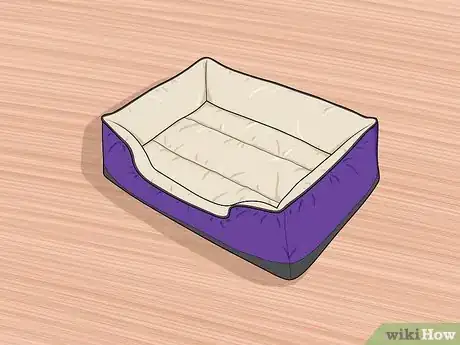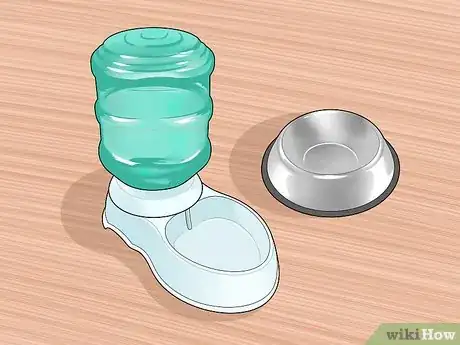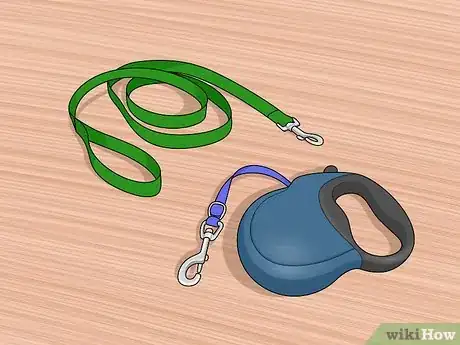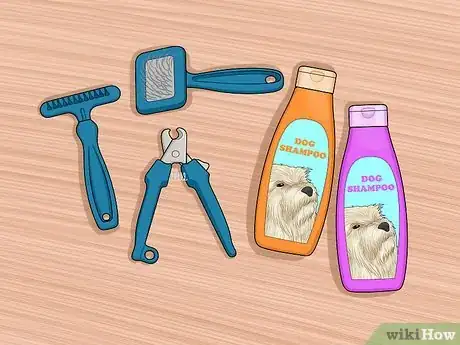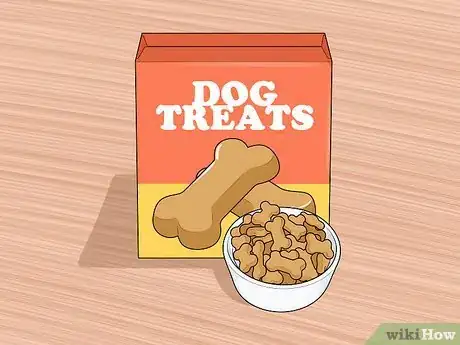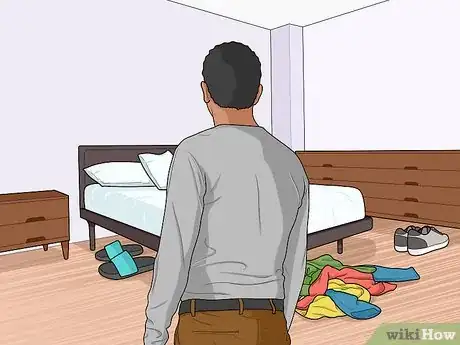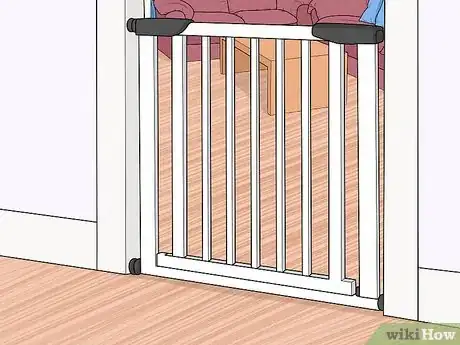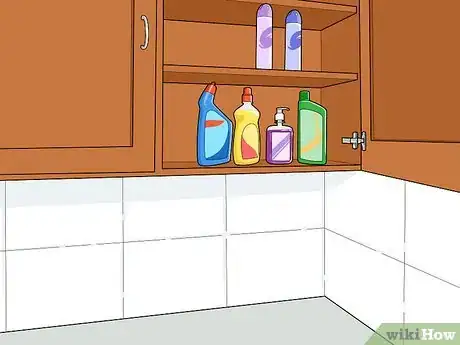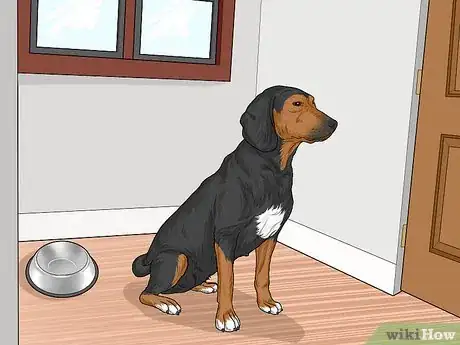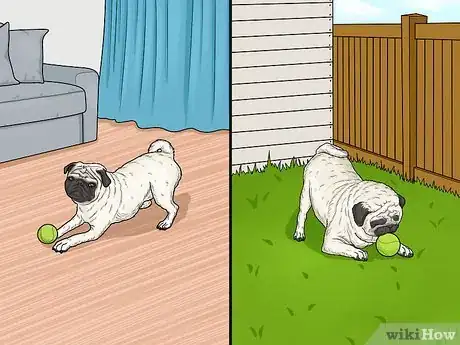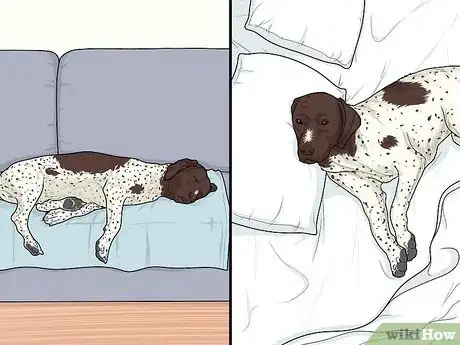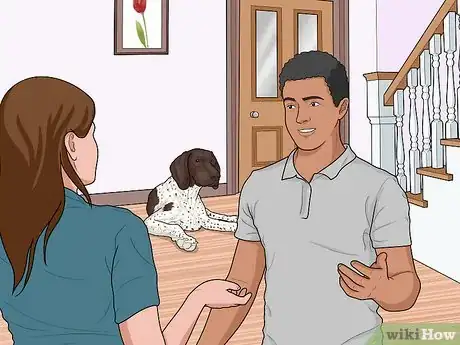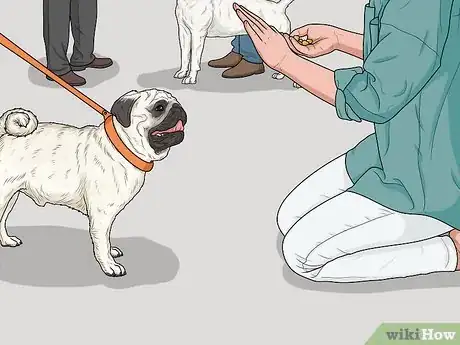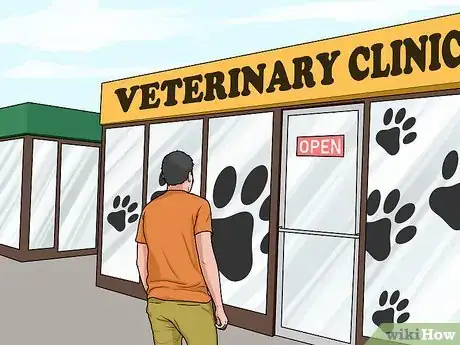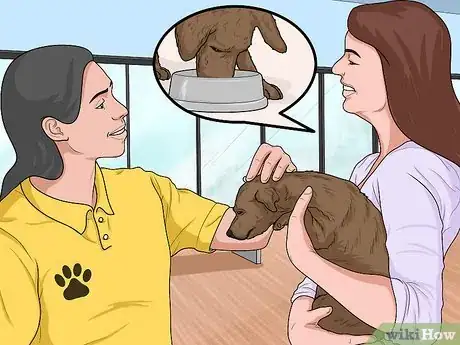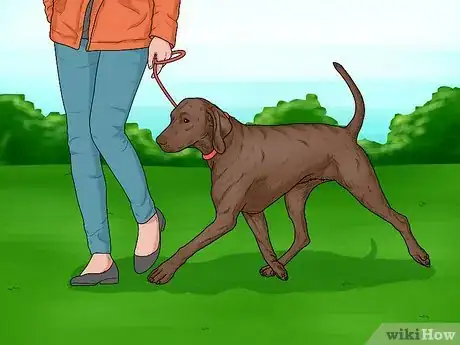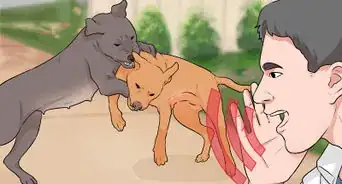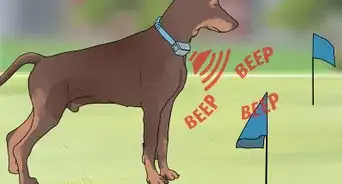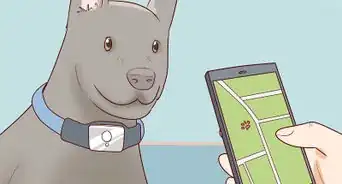This article was co-authored by Ovidiu Stoica. Ovidiu Stoica is a Professional Dog Trainer and the Founder/Owner of NYC Doggies. With over 20 years of professional experience working with dogs, Ovidiu is well versed in providing various dog care services and specializes in dog obedience and behavioral training. Ovidiu and his staff, who have more than 45 years of cumulative experience in the NYC dog walking business, provide personalized dog services including dog training, walking, hiking, boarding, sitting, and puppy care.
There are 8 references cited in this article, which can be found at the bottom of the page.
wikiHow marks an article as reader-approved once it receives enough positive feedback. In this case, 100% of readers who voted found the article helpful, earning it our reader-approved status.
This article has been viewed 55,163 times.
Adopting a new dog is one of the most exciting events for families; however, welcoming a dog also takes serious planning. You will have to take care of a few things to make it easier for your dog to transition into its new life with you. Now is the time to start gathering supplies and food, as well as prepare an area for your new family member to relax in while it gets used to living with you. Knowing what to discuss with the rest of your household about caring for the new dog can also help the adoption process go more smoothly.
Steps
Obtaining Dog Supplies
-
1Purchase waste cleaning tools to use during your dog’s bathroom breaks. Proper waste cleaning tools for dogs include a pooper scooper or plastic baggies specially designed for picking up your dog’s waste and throwing it away.
- Invest in potty pads or extra newspapers as well. Even if your dog is fully housebroken, they may be prone to accidents at first as they adjust to living with you.
- Even with a well-trained dog, accidents are inevitable. You should make sure that you have a stain remover and paper towels to deal with those occasions.
-
2Buy a bed for your dog to sleep in. Pick a bed according to your dog’s size. Try to select a plush-looking bed for your dog’s comfort, and maybe purchase a few pillows and a blanket for additional comfort. You can keep your dog’s bed in one of the family’s bedrooms, or set up an area in your den or family room. Try to pick a spot that looks cozy!Advertisement
-
3The bed should be large enough for your dog to lie down completely and stretch out without falling over the edges.
-
4Pick out your dog’s food and water bowls. Metal bowls are ideal, since they are sturdy and easy to clean. Be sure to keep your dog’s size in mind as you select their food and water bowls. A bowl that is too small and low to the ground will force a large dog to stoop down to use it, which can cause joint problems down the road. If you can’t find a bowl with its own stand, you can purchase a small stand to place your dog’s bowls onto.
- Avoid keeping your dog’s water and food bowls in the kitchen. This area is one of the most high-traffic spots in most homes. All the hustle and bustle in and out of the kitchen could stress out your dog while it eats and cause issues with their digestion. You may want to place their bowls in the dining room or in a special little nook in the living or family room.[1]
- Most dogs make a mess when they eat. Make sure wherever you place their food bowls isn’t too hard for you to clean up, and place a mat or towel under the dishes to help keep spills manageable.[2]
-
5Get a bag of dog food. Research your dog’s nutritional needs before you purchase their food. Dogs of different sizes and ages have varying dietary requirements. Talk to a vet to see what brands they recommend for your dog. Ask about foods that are research-backed and that have no additives, as these tend to be healthier.
- Try to buy your dog food in bulk; this will save money and take care of all of your dog’s meals for the month. You can keep the bag of dog food in your pantry for easy access at mealtimes.
- If your dog is elderly or special needs, ask if they require a specific food to eat.
-
6Purchase a leash for your dog. Both basic leashes and retractable leashes are perfectly capable of fulfilling your dog’s walking needs. Check the tag to see how much weight the leash can bear. This will allow you to choose the best leash for your dog’s size. If you have a key rack, you can keep the leash there so you can just grab it and go when it’s time to go for walks.
-
7Obtain grooming supplies (brushes and dog shampoos). Even if your dog isn’t longhaired or prone to shedding, they will still need to be bathed on a regular basis. Check the labels to make sure the type of shampoo you’re picking is ideal for your dog’s fur and health requirements. Grooming tools can be kept in bathroom cupboards or on shelves.[3]
-
8Buy a few toys for your dog.[4] A few toys will come in handy in terms of keeping your dog from getting bored during the quiet parts of your day. A tennis ball or rubber bouncing ball, squeaky toy, and stuffed animal are great toys to start off your dog’s collection with. You can keep them near your dog’s bed until they arrive.
- Start with a few different kinds of toys. These will help you get an idea of what your dog likes so that you can buy more in the future.
-
9Get a box of treats. Dog treats are good tools to use for training and maintaining your dog’s oral health. Try to pick an appealing flavor, such as peanut butter, cheese, or bacon. Be sure to check the box for ingredients, so you know the treats are healthy as well as enjoyable. You can keep your dog’s treats in one of your kitchen cupboards.[5]
-
10Purchase a dog crate for crate training. A crate will come in handy for bringing your new dog home. Make sure you have a general idea of the size of the dog you’re planning to adopt. This will help you to get a crate that’s big enough for your dog to stand in comfortably, and turn around without being cramped.[6]
- Make sure you buy a bed or pad for the bottom of the crate. This will help keep your dog comfortable and prevent them from getting sores.
- Place the dog’s crate in your (or another family member’s) bedroom. Dogs can get anxious when inside their crate. Knowing you’re nearby will make it easier for them to be in their crate. You can gradually move it elsewhere after the first two weeks, once your dog is more used to you.[7]
-
11Choose a special, cleanable area in your home for your new dog to stay. The first few weeks of your dog’s life in your home will be stressful, which may lead to a few potty accidents. Mark an area in your home for your dog to rest and hang out until they adjust to living with you. An area with hardwood or tiled flooring is the best choice.[8]
- If you don’t have or want to use any areas in your home with hard flooring, lay down newspaper or potty pads on your carpeting to contain any messes.
Dog-Proofing Your Home
-
1Perform a sweep of each room in your home. Walk through your house and try viewing them through your dog’s perspective. Think about areas a dog could get into and which parts of a room could cause a dog harm. Now is the time to plan out how to take care of any unsafe areas of your home that you find.[9]
- Look over your bedroom to check where you keep your shoes, dirty laundry, and hair care accessories, such as combs and bands. Your dog may be tempted to chew on these, so they will need to be placed out of sight and reach. Your shoes and laundry can be tucked into your closets. Hair care tools are best placed on your dresser, if your dog cannot reach the top, or on a high shelf.[10]
- If your living or family rooms have fireplaces installed, make sure access to the fireplace is blocked off by a grate or screen. Look out for small objects your dogs could be tempted to chew, such as toys, and put them away.[11]
- Check your kitchen inventory for foods that are poisonous to dogs. This includes coffee, chocolate, garlic, and avocados, to name a few. Place these items far out of your dog’s reach, like on a high shelf or in your pantry.[12]
-
2Set up baby gates to keep your dog out of certain bedrooms, bathrooms, or your office. Anywhere you don’t want your dog to be can be blocked off with a gate. Make sure the gates are too tall for your dog to jump over. 26 inches (66 cm) should be tall enough for a small dog, whereas 50 inches (130 cm) may be preferable for a large dog. [13]
-
3Bundle up any and all groups of electrical wires and tuck them out of sight. Puppies (and some older dogs) may get the urge to chew on exposed wires. Look around for any freely hanging wires and, if you can, bundle them together with a band. You can then tuck them behind a shelf and/or bind them against the wall with tape.[14]
- If you can’t hide certain wires, use cord covers and protectors. These will keep your dog from chewing on cords that you just can't hide.
-
4Place any fragile objects and plants out of your dog’s reach. Shelves, cupboards, and some high tables and windowsills should be effective places to keep these objects away from your dog. Keep your dog’s size in mind as you decide where to put things. You may also want to place some of these items in a room your dog cannot access.[15]
-
5Stow your cleaning products and other chemicals where your dog can’t reach. High cupboards and shelves are suitable places to keep these supplies. Your garage shelves are another good place to use for cleaning tools you don’t need as often.[16]
Setting up Dog Care Basics
-
1Work out a dog care schedule with your family. Talk with your family to determine who will housebreak the dog, who will take the dog for walks, who will feed the dog, and who will play with it. Discuss what time these responsibilities will take place each day.[17]
- You may want to walk the dog and let it use the bathroom first thing in the morning. Feed it immediately after you return home. Take the dog back out to use the bathroom after it finishes eating. Whoever wakes up earliest in the morning can take care of these responsibilities, if they are old enough.[18]
- The rest of the afternoon can be filled with your other daily responsibilities. Give your dog breaks every few hours to go for walks and use the bathroom.[19]
- The evening is a great time to play with the dog and feed it supper. Offer these tasks to your kids. They’ll likely be at school during the day, so evening responsibilities can help them bond with the dog.[20]
- Take the dog out for one last bathroom break just before the house settles down for bed.[21]
-
2Decide which areas you may want to keep the dog out of and how you’ll keep them out. Some areas you may want to keep the dog out of could be a guest bedroom or the bathrooms. You could settle on using a baby gate or just keeping the door closed to keep the dog out.
-
3Discuss whether the dog be living inside or kept outdoors. Some people do not like the idea of a dog living inside the house. If you want to keep your dog outside, make sure you have a fenced yard that’s large enough for your dog to roam and play in. Alternatively, you may agree to keep the dog outside during the day and let it inside at night.
- If you choose to keep your dog outside for any extended period, make sure it has access to food and fresh water, along with a shelter to protect them from the elements.
-
4Talk about whether the dog can sleep in family beds or get up on the couch. Talk about how you’ll keep the dog from getting up on the furniture if you don’t want them on it. You may buy the dog its own furniture to use (like blankets and chairs) and hash out training methods to teach it that your furniture is off-limits. You could also agree to let it on some furniture (like specific chairs or one family member’s bed) but not others.
-
5Decide who will stay home the first week to care for the dog. If possible, you or one of your family members should stay home to care for the dog the first week it comes home. This is about the usual amount of time it will take the dog to get used to living with you and fall into your routine.[22]
- If no one in your household can stay home with the dog, look around for pet care services, like daycares and walking services.[23]
-
6Look for obedience classes. Obedience classes are a great option if you’re a new dog owner. They can help you learn the best ways to socialize and train your dog so your relationship can develop smoothly. Be sure to research different obedience classes in your area. Check Google and Yelp ratings for a class’s quality.[24]
- On top of being a good way to teach your dog proper behaviors, obedience classes help you build a relationship with your dog. This is why they are recommended any time you bring a new dog into your house.
- Make sure everyone in your home spends time at obedience training with your dog. This way your dog learns to listen to and bond with everyone in your house.
-
7Go vet shopping. Whether you’re adopting an adult dog or a puppy, it’s important to find a clinic to handle their basic care. You should set up an initial check-up soon after adopting your new dog. Look around at different vets in your area and compare prices and personalities. The best vet is one that is able to handle animals responsibly and compassionately, but also fits into your budget.[25]
- If you know anyone else with a dog, ask them for vet recommendations. Word of mouth is a great way to find new, highly-recommended pet health professionals.
-
8Prepare a set of tags with your information to bring on adoption day. Getting your dog’s tags ready in advance is a good safety measure. If your dog gets lost, anyone who finds it can get in touch with you by reading the tags attached to your dog’s collar.[26]
- If your dog has already been chipped by the adoption center, be sure to request that they modify the chip to feature your information.[27]
-
9Ask the shelter about your dog’s food and meal schedule. Suddenly switching your dog over to a new brand of food can upset their stomach. It’s better for your dog’s health to feed them the same way they were fed at the shelter. Wait at least one week before gradually introducing new food.[28]
- If you need to switch your dog to a new food, do so gradually. Start by adding 1/4 cup of their new food to a bowl of their old food. Increase the amount of the new food and decrease the amount of the old food a little every day until your dog has fully transitioned.
-
10Implement your dog care routine. It’s best to introduce your dog to its new daily routine from day one. The sooner they learn how living with you works, the easier it will be for them to adjust to life with your family. Start housebreaking and walking your dog according to the schedule you and your family discussed earlier.[29]
Warnings
- Don’t adopt a dog if you or someone in your family has a pet allergy. You will just end up having to rehome or return the dog.⧼thumbs_response⧽
- Crate your pet cats if you aren’t sure whether your new dog has been socialized with them yet. Let the dog get to know the cat slowly and be sure to keep an eye on both animals each time they meet each other.[31]⧼thumbs_response⧽
Things You'll Need
- Waste bags
- Waste cleaners
- Leash
- Collar
- Pet tags
- Dog grooming tools
- Pet bed
- Dog toys
- Food and water bowls
- Dog treats
- Dog food (wet and/or dry)
- Pet crate
References
- ↑ https://www.petfinder.com/dogs/dog-nutrition/where-to-feed-dog/
- ↑ https://www.petfinder.com/dogs/dog-nutrition/where-to-feed-dog/
- ↑ http://www.arlboston.org/welcoming-your-adopted-dog-into-your-home/
- ↑ Ovidiu Stoica. Professional Dog Trainer. Expert Interview. 1 March 2021.
- ↑ http://www.arlboston.org/welcoming-your-adopted-dog-into-your-home/
- ↑ https://www.petfinder.com/dogs/bringing-a-dog-home/tips-for-first-30-days-dog/
- ↑ https://www.labradortraininghq.com/labrador-training/what-to-put-in-a-dog-crate-and-where-to-put-it/
- ↑ https://www.petfinder.com/dogs/bringing-a-dog-home/tips-for-first-30-days-dog/
- ↑ https://www.petfinder.com/dogs/bringing-a-dog-home/tips-for-first-30-days-dog/
- ↑ https://thebark.com/content/dog-proofing-your-home-room-room-guide
- ↑ https://thebark.com/content/dog-proofing-your-home-room-room-guide
- ↑ https://thebark.com/content/dog-proofing-your-home-room-room-guide
- ↑ https://www.petfinder.com/dogs/bringing-a-dog-home/tips-for-first-30-days-dog/
- ↑ https://www.petfinder.com/dogs/bringing-a-dog-home/tips-for-first-30-days-dog/
- ↑ https://www.petfinder.com/dogs/bringing-a-dog-home/tips-for-first-30-days-dog/
- ↑ https://www.petfinder.com/dogs/bringing-a-dog-home/tips-for-first-30-days-dog/
- ↑ http://www.arlboston.org/welcoming-your-adopted-dog-into-your-home/
- ↑ https://www.labradortraininghq.com/labrador-training/what-to-put-in-a-dog-crate-and-where-to-put-it/
- ↑ https://www.labradortraininghq.com/labrador-training/what-to-put-in-a-dog-crate-and-where-to-put-it/
- ↑ https://www.labradortraininghq.com/labrador-training/what-to-put-in-a-dog-crate-and-where-to-put-it/
- ↑ https://www.labradortraininghq.com/labrador-training/what-to-put-in-a-dog-crate-and-where-to-put-it/
- ↑ http://dogtime.com/dog-health/general/262-adults-bringing-home
- ↑ http://dogtime.com/dog-health/general/262-adults-bringing-home
- ↑ http://dogtime.com/dog-health/general/262-adults-bringing-home
- ↑ http://dogtime.com/dog-health/general/262-adults-bringing-home
- ↑ https://www.petfinder.com/dogs/bringing-a-dog-home/tips-for-first-30-days-dog/
- ↑ https://www.petfinder.com/dogs/bringing-a-dog-home/tips-for-first-30-days-dog/
- ↑ https://www.petfinder.com/dogs/bringing-a-dog-home/tips-for-first-30-days-dog/
- ↑ http://dogtime.com/dog-health/general/262-adults-bringing-home
- ↑ https://www.petfinder.com/dogs/bringing-a-dog-home/preparing-home-new-dog/
- ↑ http://www.arlboston.org/welcoming-your-adopted-dog-into-your-home/
About This Article
To prepare your household for a new dog, start by getting some necessary supplies, like plastic baggies designed for dog waste, a dog bed, and food and water bowls. Additionally, get a crate for when you’re not home or for bedtime so the dog feels secure and doesn't cause any trouble around the house. You’ll also want to buy some baby gates if there are rooms you want to keep your new dog out of. Also, tuck electrical cords out of sight to avoid chewing accidents, and place cleaning and fragile objects out of the dog’s reach. To learn how to pick a vet for your new dog, keep reading!
